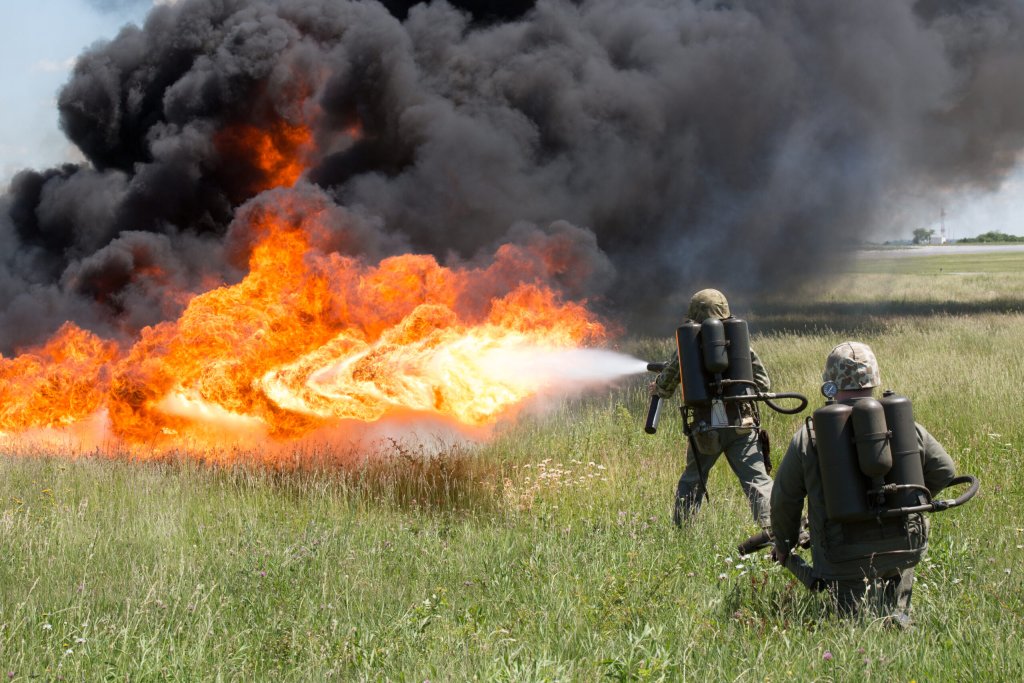

When it comes to weapons, flamethrowers have a special place in our hearts. Sure, guns are cool, but they lack the fiery, explosive power that these mobile fire machines bring to the table. From the trenches of WWI to the modern battlefield, these weapons have undergone quite an evolution. Let’s take a look at how flamethrowers have changed since their inception.
The Early Days of Flamethrowers
The use of flamethrowers in World War I was a game-changer. That’s because they offered warfighters a new way of attacking enemy forces that had never been seen before. The Germans were the first to develop and use flamethrowers on the battlefield, and they were highly effective in clearing out enemy trenches and bunkers. During the Battle of the Somme in 1916, German flamethrower teams were able to flush out British soldiers from their positions with ease.
However, the use of flamethrowers was not without risks. Enemy fire posed a significant threat to flamethrower operators in battle, as the fuel tanks strapped to their backs were highly vulnerable. Consequently, many of these soldiers were either seriously injured or killed.
Adding to that, the use of flamethrowers also had a psychological impact on both soldiers and civilians. Can you imagine seeing one in action? Despite these risks, flamethrowers showed up in battle after battle.
World War II and Beyond
During World War II, flamethrowers became more advanced. The United States developed the M1 and M2. Both were much lighter and easier to operate than their predecessors. During the Pacific campaign, soldiers used these weapons to great effect in clearing out Japanese bunkers. Although flamethrowers had some flaws and risks in their early days, they ultimately proved to be highly effective weapons.
After the war, these fiery weapons continued to evolve. The Vietnam War saw the introduction of the M9 and M9A1. Both became more mobile and effective. They were also easier to maintain and repair, making them ideal for use in the harsh jungle environment.
This Marine received the Medal of Honor for his skills as a flamethrower.
During the Vietnam War, flamethrowers continued to evolve. American soldiers used them to clear out enemy tunnels and bunkers, as well as to destroy enemy crops and infrastructure. One example of the use of flamethrowers in Vietnam was the battle of Tam Quan in 1967. American troops engaged in a fierce battle with Viet Cong forces. In a complex of bunkers and tunnels, the enemy had dug in deep. The soldiers deployed flamethrowers to flush out the enemy, using intense heat to burn the tunnels and bunkers. Although controversial, military strategists viewed the use of flamethrowers as a necessary tactic in the difficult and unpredictable jungle warfare of Vietnam.

Modern Flamethrowers
Today, flamethrowers are still in use, albeit in limited capacities. They are primarily used for clearing out enemy fortifications and for controlled burns in firefighting operations. Modern flamethrowers are much lighter and easier to use than their predecessors. They are also more fuel-efficient, meaning that soldiers can carry more fuel and stay in the fight longer.
In 2016, Kurdish Peshmerga forces used flamethrowers in the battle for Mosul, Iraq. The Peshmerga used flamethrowers to destroy ISIS tunnels and bunkers, which were difficult to attack using traditional methods. The use of flamethrowers was seen as an effective tactic in the battle, but it also drew criticism from some who saw it as a cruel and inhumane weapon.
Flamethrowers are also used in controlled burns for firefighting operations. In 2020, the United States Forest Service used a specialized flamethrower known as the “Dragon Torch” to conduct a controlled burn in California. The device was used to create a firebreak in the path of an ongoing wildfire, helping to contain the blaze and prevent it from spreading further.
Despite their effectiveness in combat and firefighting, the use of flamethrowers is controversial due to the extreme nature of the weapon. Flamethrowers are often seen as inhumane and barbaric, and their use is strictly regulated by international law. The Convention on Certain Conventional Weapons bans the use of flamethrowers in civilian areas, and their use in military operations is subject to strict rules and regulations.
Final Thoughts
So, there you have it – the fiery history of flamethrowers. These weapons may not be everyone’s cup of tea, but there’s no denying that they pack a punch. From the trenches of WWI to the jungles of Vietnam and the battlefields of Iraq, flamethrowers have left their mark on military history.
But let’s be real here – as cool as flamethrowers may be, they’re also pretty terrifying. The thought of being on the receiving end of one of these bad boys is enough to make anyone break out in a cold sweat. So, while we can appreciate the engineering and innovation that went into creating these weapons, let’s hope we never have to come face-to-face with one in real life.
Until then, we’ll just have to settle for watching flamethrowers in action in movies and video games – because let’s face it, they make for some pretty epic explosions.
